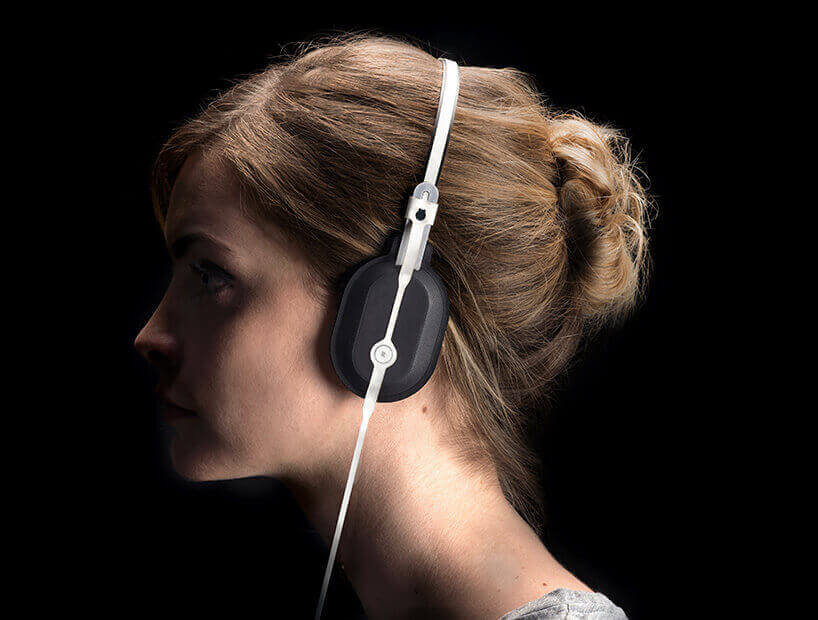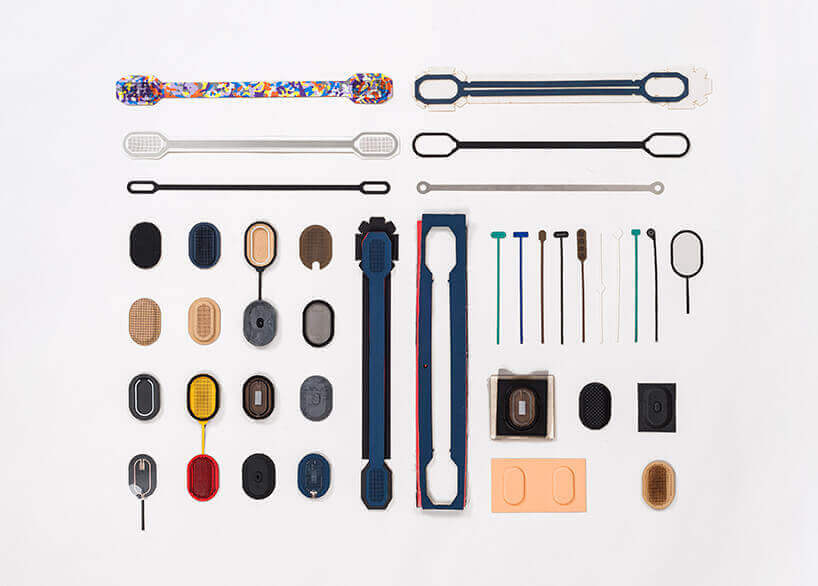What you should know: French design student Maxime Loiseau created a set of 3D printed headphones that transmit sound through printed electronics.

Headphones have become such a commodity you don’t think about them. But have you ever realized what’s in your headphones you grab every day? It’s two more or less capable speakers, a multi-part casing, padding foam, junctions, screws, a hoop for over-ear headphones, cables, soldering, connections – this can get up to 50 pieces easily.
But you can reduce that to the minimum, as Maxime Loiseau demonstrates. The student of École Nationale Supérieure de Création Industrielle (ENSCI) in Paris reduced his 3D printed headphone to just eight elements. That’s foam, netting, thermoformed plastic, a metal hoop, thermo-welded tabs and the speaker. He showcased his prototype at Wanted Design Brooklyn during NYCxDesign.
Loiseau built his “Roll to Roll Headphones” using a process of the same name. “Roll-to-roll” processing (also known as reel-to-reel processing, R2R or web processing) means creating electronic devices on a roll of plastic or foil. Sophisticated circuits are printed on thin-film transistors, which cuts down costs dramatically.
Flatten Your Headphones

For his 3D printed headphone prototype, Loiseau radically stripped down the components. Instead of using wires, soldering iron and connectors, he printed them. Also, in his 3D printed headphones there are no junctions. Instead, a foil is connected to the hoop and put in shape with a laser cutter. He also got rid of the cable, printing it on the foil also (which also has the advantage of the cables not turning into a gordic knot).
The headband and casing for the earpieces are formed from a continuous plastic strip, which is laser cut from a flat sheet. Two layers of the material encase and protect the components.
The result is a working, inexpensive, super thin headphone. “Through an object, I challenge this new way of designing and producing an object”, Loiseau stated in an interview with Designboom. “I question the advantages and benefits of ‘roll to roll’ production techniques, and also explore how those techniques influences the formal vocabulary of the object, made of thin strata and superposed layers.”
3D Printed Headphone: How does it Sound?
Don’t expect the headphones to sound like your industry-grade Samsung, Apple, Sennheiser, AKG or even Beats headphones. A piezoelectric crystal is only capable to produce sound from 300 to 20.000 Hz. So there won’t be any relevant bass frequencies, which makes EDM pretty dull. Also piezo speakers sound harsh, as they are not optimized for listening pleasure, but just for fast linear reproduction of sounds.
But if you start thinking outside of the box, Maxime Loiseau’s creations can be used in a lot of new and unexpected ways. How about attaching a bunch of small speakers around the room for a nice acoustic ambiance? How about adding Bluetooth and motion sensors to them? Or how printing inexpensive headphones depending on the occasion?
So, what’s your take on 3D printed headphones?
License: The text of "3D Printed Headphones: Ultra-Minimal, Looking Great" by All3DP is licensed under a Creative Commons Attribution 4.0 International License.